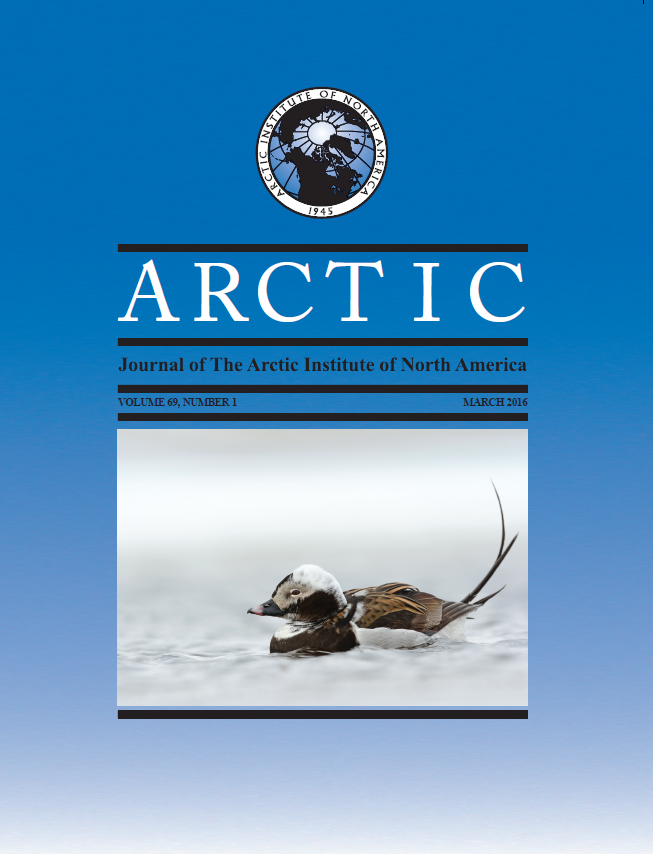Identification of Bird Species Used to Make a Viking Age Feather Pillow
DOI:
https://doi.org/10.14430/arctic4546Keywords:
northern Norway, Vesterålen islands, Viking Age, boat grave, pillow, birds, feathers, microstructureAbstract
A grave containing the remains of a wooden boat was discovered in 1934 under a low mound in a bog at Øksnes in the Vesterålen islands of northern Norway. The boat grave dates to the 10th century in the Viking Age, and grave goods placed in the boat include an iron axe, a cowhide in which the body was wrapped, and pillow remains consisting of feather stuffing and a wool textile cover. A microscopic analysis of the feathers from a subsample of the pillow fill identified three avian orders: Anseriformes (eider); Suliformes (cormorant), and Charadriiformes (unspecified gull). It was possible to make one species-level identification of Great Cormorant (Phalacrocorax carbo) and to narrow the gull types to the “white-headed” gull group. The sample was composed of a nearly equal mix of downy and pennaceous feather types. Downy feathers from gulls (Laridae) composed the majority of the material in this sample. While it is reported that feathers and down (assumed to be eider) were used in the Late Iron Age, this is the first successful attempt to identify bird species used in these materials and suggests that avian species identifications should be explored in other such burial items to enhance our understanding of human-wildlife interactions throughout Norse history.Downloads
Download data is not yet available.


